Rules for planting edible honeysuckle seedlings in spring and autumn
Recently, in many household plots, you can find a tall shrub, honeysuckle. There are several varieties of this plant. Ornamental varieties are used for hedging and landscape design, and edible varieties are used for making stewed fruit and jam. Honeysuckle is planted in spring and autumn with seedlings. This plant is distinguished by early fruiting and frost resistance, which allows it to be grown in the Urals and in the northern regions of the country, up to the Arctic Ocean.
How is honeysuckle useful?
Edible honeysuckle is a berry crop. This is a tall shrub, reaching 2.5 m in height and covered with elongated dark blue berries, which have a unique sweetish-sour taste with a slight bitterness. Berries ripen earlier than many horticultural crops - for example, two weeks earlier than strawberries. Early fruiting makes honeysuckle a popular and sought-after plant among gardeners. Indeed, growing this shrub on your site, from the beginning of June you can enjoy a tasty and healthy berry, replenishing the supply of vitamins that was wasted over the winter.
The beneficial properties of honeysuckle have been known for a long time, and all parts of this plant are used in folk medicine.
Berries can be eaten raw, as well as compotes and jams. They not only saturate the body with all the necessary vitamins, but also have a bactericidal and diuretic effect, help with indigestion and intestinal disorders.
A decoction made from bark and branches saves from dropsy. A decoction of the leaves is used to treat diseases of the throat and eyes, and infusion from the flowers is used to relieve inflammation of the bladder.
Honeysuckle is used to treat diseases of the heart and blood vessels, to normalize blood pressure. This berry is indispensable for people working near places with high radiation.
A shrub with such a useful berry is not difficult to grow. Honeysuckle grows 35–40 years old and already from the seventh year of life begins to bear fruit. The main thing to remember when planting this plant is that by itself it is practically sterile, and in order to obtain a harvest, several bushes must be placed next to each other, ensuring cross-pollination.
How to choose seedlings?
The huge variety of varieties makes it difficult to choose honeysuckle seedlings. Plants can differ in the height of the bush and the ripening time of the berries, in the taste of the fruit and in yield. Therefore, when buying a seedling, you need to check with the seller all the nuances of growing the selected plant.
Here are a few key points to look out for when choosing honeysuckle seedlings.
- A two-year-old bush with 2-3 branches is best suited for planting. The height of the seedling should be between 40 and 100 cm. Too small a sprout indicates that the seedling has not yet sufficiently rooted and developed. Long shoots will take a long time to take root.
- Flexible branches with buds are a sure sign of a healthy, developed plant. The bark, in some places detached from the trunk, is a feature of the honeysuckle, and not a lack of care.
- The seedling must have a strong, branched root system. It is better to buy plants in separate containers or bags that protect the root system: this way they are easier to replant and they take root faster.
- Honeysuckle is cross-pollinated, but not all varieties complement each other equally well. Therefore, it is necessary to purchase several seedlings of different varieties at once.
The choice of edible honeysuckle seedling is not an easy and very responsible business, therefore it is better to purchase planting material in specialized stores or from summer residents who are engaged in breeding this berry bush.
Where to plant honeysuckle?
Honeysuckle cannot be called a very whimsical plant, but if you choose the place of planting illiterately, you will not be able to get a full harvest.
The fruiting of a berry bush will be sharply reduced if it is planted in an area with high acidity. The soil should be neutral and consist of loam with the addition of organic matter.
Honeysuckle does not like wetlands or too dry soil. If the groundwater level is less than one meter, the root system of the shrub begins to rot and soon the plant dies.
The formation of honeysuckle berries is greatly influenced by sunlight. For planting seedlings, you need to choose sunny areas, protected from the wind from all sides. With insufficient lighting, the fruiting of the shrub is sharply reduced, the berries become small.
Rules for planting honeysuckle seedlings
With the onset of autumn, the growing season of honeysuckle gradually dies down. It is better to plant a shrub during this period (September-October), when the plant enters a dormant phase.
However, closed-root seedlings purchased in separate containers can be planted in early spring. The best time for spring planting is the second half of April.
In order for the plant to quickly root and develop correctly, when planting, it is necessary to take into account some of the features reflected in the step-by-step instructions below.
- A place for planting seedlings is prepared a week before the start of work. To do this, at a distance of 1.5-2 m from each other, holes are dug in the form of a cube measuring 0.5x0.5x0.5 m. It is very important to leave enough free space between the plants, since the bush quickly forms a lush crown, and the branches of the honeysuckle are fragile and break easily. When planting decorative varieties, it is better to make the gaps between the seedlings a little larger, about 3 m.
- Honeysuckle does not tolerate stagnant water, so drainage is necessary. For the device of the drainage layer, expanded clay or crushed stone is poured at the bottom of the planting pit.
- The well is filled with a nutrient mixture consisting of two compost buckets, 1 kg of ash and 50 g of superphosphate. The amount of composted mixture will vary depending on the composition of the soil. If the soil is sandy, you can add another bucket of compost.
- The planting pits are spilled with water and after all the moisture has been evenly absorbed, a small earthen mound is made in the center of the hole. A seedling is placed on its top, the roots of which are carefully straightened and sprinkled with soft soil. Moreover, the root collar should be located no deeper than 5 cm.
- The planted bush must be watered abundantly again. To prevent the soil from drying out, the area around the trunk is covered with mulch.
Important!
Do not prune the honeysuckle after planting, as this will delay the development and fruiting of the plant. Only broken and dry branches can be removed.
Young bushes are watered abundantly during the first year of life. To keep immature plants from frost, sprinkle the soil with a thick layer of mulch.
How to plant honeysuckle from a container?
Recently, containerized seedlings with a closed root system have appeared on the market. The idea of this growing method is that the young plant is immediately planted in a separate container. As the root system develops, together with a lump of earth, the seedling is transferred into a larger container. This is a rather laborious process, therefore, such cultivation is used only in specialized nurseries.
Planting honeysuckle from a container or bag is much the same as planting a plant with bare roots, but it also has its own subtleties.
- The earth lump is moistened by immersion in a container with water and only after that they start planting.
- Do not cut the roots that show through the drainage hole. Better to cut the container in half and gently release the root system or cut the bottom.
- If the roots of the plant have been in a dark bag for transportation for a long time, they must be straightened and placed in a container with water for a while.
The root collar is left at the level of the soil, without deepening it, since in nurseries, plants are usually immediately planted at the desired depth.
Honeysuckle care
Honeysuckle does not require special care, but, like any garden plant, it needs loosening and timely watering, weeding, feeding and pruning.
- Loosening
The roots of the honeysuckle are located close to the surface, so loosen the soil under the bushes very carefully, trying not to hurt the basal processes. Before the onset of winter, the ground must be dug up 10-15 cm deep with a pitchfork.
- Watering
Honeysuckle requires full regular watering. In nature, this shrub grows on the banks of rivers and lakes, which means that the plant loves moisture very much. With insufficient watering, the number of berries sharply decreases, the fruits become small and bitter. Therefore, during the period of pouring berries for watering, due attention should be paid, especially if the spring turned out to be dry.
- Fertilization
In spring, honeysuckle is fed with organic matter in combination with mineral fertilizers at the rate of 30 g per 1 m2 landings. In the fall, a phosphorus-potassium mixture and ash (100-200 g per 1 m2).
- Pruning
Honeysuckle refers to berry bushes, prone to strong thickening of branches, so the formation of the crown of the plant must be taken very seriously. 3 years after planting, it is necessary to give the bush a sparse shape by cutting out the extra branches. When the bush reaches 8 years of age, they begin to rejuvenate the honeysuckle. To do this, cut out 2-3 old branches, leaving only young growths.
Planting and growing honeysuckle is not difficult. The main thing is to purchase high-quality planting material and follow the advice of experts on choosing a planting site and caring for this undemanding plant. The reward for your efforts will be a beautiful lush bush, strewn with tasty and healthy berries.
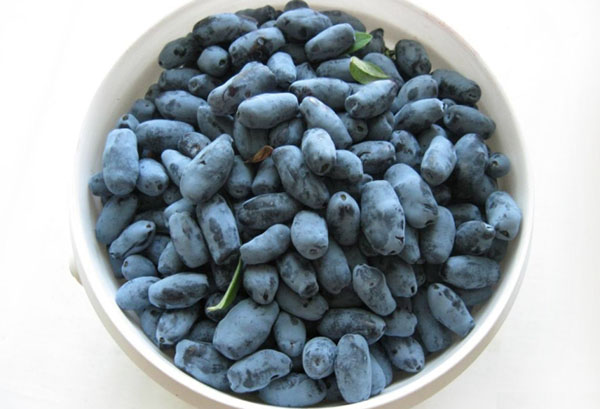
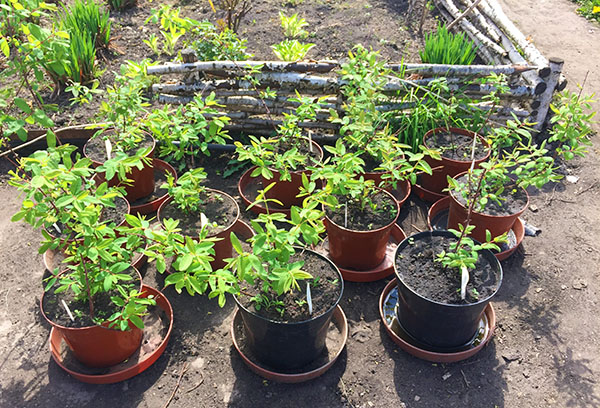
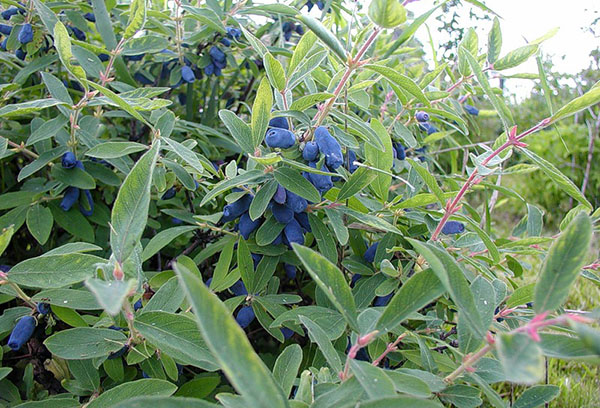
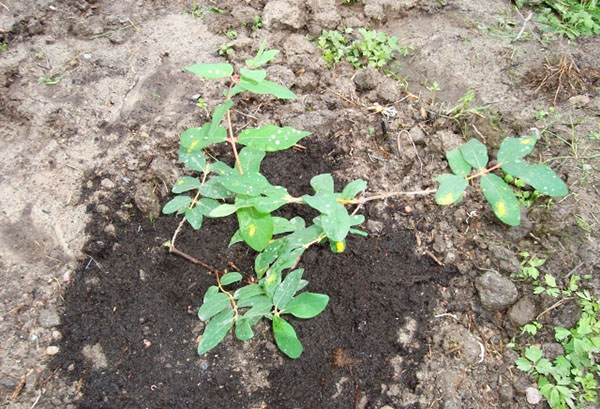
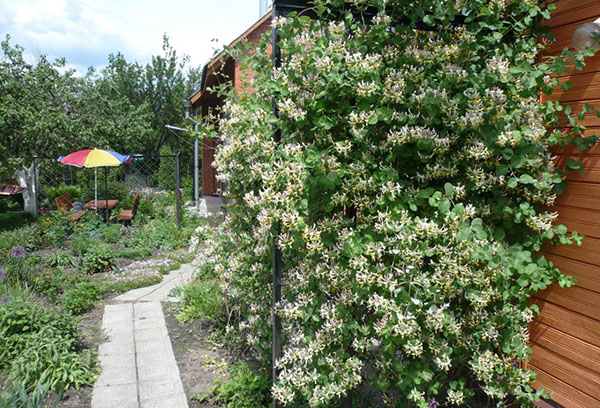
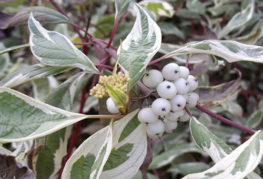
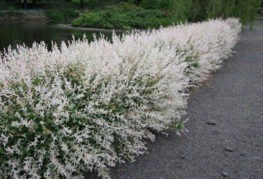
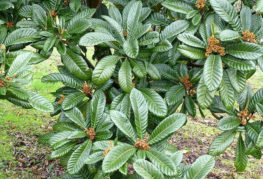
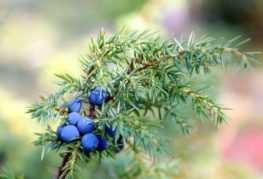
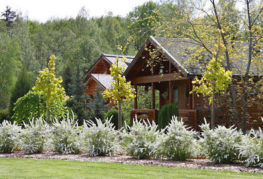
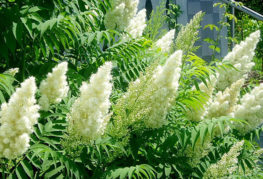
and will be published shortly.